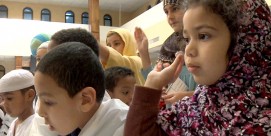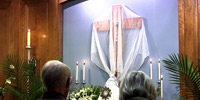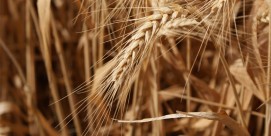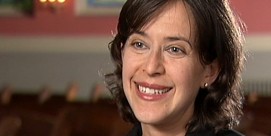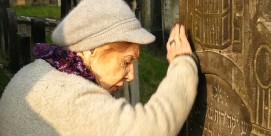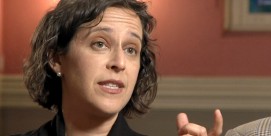In This Episode << SLIDE LEFT TO SEE ADDITIONAL SEGMENTS
Desert Passover Seder
RABBI JAMIE KORNGOLD (Adventure Rabbi): The desert is absolutely the right place to be telling this story. The core of this story is that the Israelites went down to Egypt as a family. They come out, 600,000 people, and then they wander in the wilderness and become a nation. It’s in the wilderness where they meet God. It’s in the wilderness where God speaks to Moses. It’s in the wilderness where the people get the teachings of the Torah.
On Passover, we’re taught to embody the story, to act out the story, and so when we walk through the desert, we really get that idea of freedom, of being out in the wilderness and all the spiritual moments that are possible.
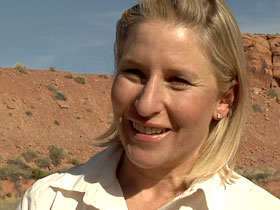
I talk a lot about the idea of cultivating the patience to see burning bushes. The idea being that if Moses had been called from God and the burning bush today, he would have just walked right by it because his cell phone would have rang. So one of the things that we work on a lot out here is just reminding people to just slow down and just be fully present noticing this amazing environment.
Our seder has most of the elements of a traditional seder but, ironically, we’ve taken the “seder,” which means “order,” out of the seder. We hike a mile and a half up to the seder, we do some teachings along the way. And then we have the first part of the seder underneath the arch.
(reading to group): “On all other nights, we eat leavened bread or matzah. Why on this night only matzah?”
RABBI KORNGOLD: One of the practices that we do that’s very unusual, is we read the story of the Exodus directly from the scroll, from the Torah scroll. We’re trying to take this spiritually rich experience that people have out here and ignite their Judaism.
Rabbi Evon Yakar: (speaking at seder) As we look back and hold on to the tradition, the story, that we come from, it’s also our responsibility to continue telling, and continue writing, that story.
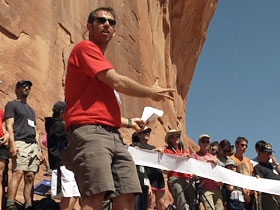
RABBI KORNGOLD: And for a lot of people that come on our trips, they’ve never seen a Torah up close. And what we’re trying to do is create a relationship between the people and their Torah.
Cantor Rollin Simmons reading from Torah scroll: “Here was the bush burning in flames, but the bush was not consumed…”
RABBI KORNGOLD: So you’re already feeling elevated and then you read from the bible, or then you read from the liturgy. Suddenly the words, the ancient words take on the power that they were supposed to take on all along.
The dancing that takes place at the end of the first part of the seder up under the arch is so exuberant. We’re joyful just that we’re up here, that we can be in this gorgeous place. And then we all hike back down, and then finish the seder along the banks of the Colorado River.
Rabbi Yakar: “We now turn to the karpas, parsley…the saltwater represents the tears of enslavement…”
Group reading together: “This is the bread of affliction that our ancestors ate in the land of Egypt.”
RABBI KORNGOLD: One of the things that I love about the Adventure Rabbi retreat in Moab is looking back over my shoulder at this snake, this line of people, walking through the desert. It looks so much like the wilderness of Zin, it looks like the Negev, it looks like the land through which the people walked. It’s an amazing feeling of, “Hey Moses, hey Miriam, hey Aaron! It worked. It worked. All 600,000 of you made this trek through the wilderness and here we are, thousands of years later, going through the wilderness as Jewish people. Your ideas were good. They held out guys!”

